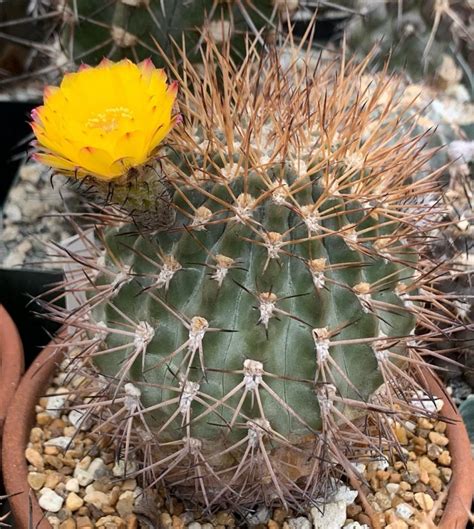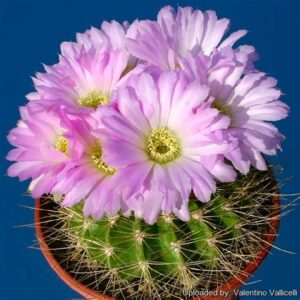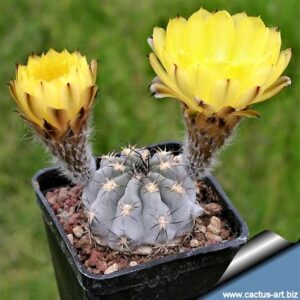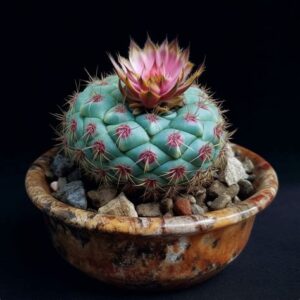Growing Acanthocalycium thionanthum, often celebrated for its enchanting floral displays and unique character, is an endeavor that can enrich any enthusiast’s collection. This cacti species, native to South America, requires particular attention and care to thrive. In this article, we will delve into essential strategies that ensure the successful cultivation of Acanthocalycium thionanthum.
Understanding its habitat, along with the specific needs of this fascinating succulent, allows growers to create an optimal environment that mimics its natural conditions. Whether you are a novice or an experienced gardener, the following sections will guide you through every aspect of its cultivation.
Before embarking on the journey of growing Acanthocalycium thionanthum, it is vital to acknowledge the key buyer concern: how to replicate its natural habitat to promote healthy growth and flowering. This understanding will serve as the foundation for various care techniques.
Let us explore each facet of successful Acanthocalycium thionanthum cultivation, from environmental setups to soil composition and watering practices.
Exploring Natural Habitat and Conditions
Acanthocalycium thionanthum thrives in arid regions, specifically the arid foothills of the Andes. Understanding its natural habitat allows growers to simulate similar conditions in domestic settings. This cacti species flourishes in areas that experience distinct climatic variations, with noteworthy fluctuations in temperature between day and night. Such conditions necessitate a careful balance between warmth and moderation, mirroring its native environment.
Typically, Acanthocalycium thionanthum prefers full sun exposure; thus, positioning it in a location that receives ample sunlight will benefit its growth significantly. A south-facing window or a greenhouse with adequate light will often suffice. When placed properly, the plant can absorb the necessary light to thrive, leading to optimal growth and vibrant blooms.
Pest management is an additional concern associated with Acanthocalycium thionanthum. Common pests such as mealybugs and aphids may pose threats to its health. Regular inspections and timely interventions will ensure that any infestations are managed before they compromise the integrity of the plant.
Crafting Perfect Soil Mixtures
Soil composition is pivotal in nurturing Acanthocalycium thionanthum. In the wild, this cactus typically grows on sandy or gravelly soils, with excellent drainage properties. To replicate this, it is imperative to use a well-draining potting mix that includes a combination of cactus soil, perlite, and sand.
The right soil not only allows efficient water drainage but also provides essential nutrients that might be required during growth phases. A recommended ratio would be two parts cactus soil, one part perlite, and one part coarse sand. This mixture enhances aeration and retains minimal moisture, preventing rot—a common malady in succulent care.
Ensuring the pot has ample drainage holes is equally essential. Excess water retention can lead to root rot, which could prove fatal to Acanthocalycium thionanthum. Opting for terracotta pots can further facilitate moisture evaporation, thereby maintaining an optimal balance of humidity in the soil.
Mastering Watering Techniques
The watering regimen for Acanthocalycium thionanthum is a delicate dance; too little water can lead to dehydration, while excessive watering can engender rot. This cactus follows a seasonal pattern of growth, where active growth typically occurs in the warmer months. Hence, understanding the cyclical watering needs during varying seasons is essential.
During the growing season, the plant thrives on a moderate watering schedule. It is advisable to water thoroughly but infrequently, allowing the soil to completely dry out between watering sessions. A good rule of thumb is to water every two weeks during spring and summer, adjusting the frequency based on environmental conditions.
As temperatures begin to cool in the fall, transitioning into a dormant state, watering should be reduced significantly. During the winter months, a light misting or occasional watering may suffice, ensuring the cactus remains hydrated without excess moisture accumulation. By adhering to these practices, you can create a thriving environment that supports the optimal health of your Acanthocalycium thionanthum.
Maintaining Ideal Temperature and Humidity
Temperature plays a crucial role in the successful growth of Acanthocalycium thionanthum. The ideal temperature range for this cactus is between 70°F to 80°F (21°C to 27°C) during the day, with a notable drop to around 50°F to 60°F (10°C to 15°C) at night. Such fluctuations mimic the natural cycle, enabling the plant to adapt and flourish.
Humidity levels should remain low, reflecting the dry conditions from which it originates. Acanthocalycium thionanthum does best in less than 30% humidity. Using a dehumidifier or ensuring proper ventilation can help maintain these optimal conditions, particularly in areas with high ambient moisture.
Another effective strategy for enhancing temperature control is to utilize heat mats. This approach maintains a consistent warmth around the root zone, especially crucial during cooler months or in regions where temperatures dip significantly.
Understanding Fertilization Needs
Fertilization is a fundamental aspect that encourages robust growth and vibrant blooms. Acanthocalycium thionanthum benefits from a balanced fertilizer during the active growing season. A diluted liquid cactus fertilizer, applied every four to six weeks, can provide adequate nutrition without overwhelming the plant.
However, it is essential to avoid fertilizing during the dormant winter months, as this can encourage unnecessary growth and stress the plant. Utilizing organic options such as compost tea can also be an excellent alternative, contributing micronutrients while maintaining the balance in the soil’s health.
The Potential for Blooms
One of the most significant rewards of growing Acanthocalycium thionanthum is its striking blooms. These cacti produce stunning flowers in brilliant shades, which can be a delightful spectacle when conditions are met with precision and care. Adequate sunlight, proper watering, and appropriate nutrition will significantly enhance the likelihood of blooms during the spring and summer months.
To promote flowering, growers should minimize disturbances during the growth cycle, allowing the plant to conserve its energy for blooming. Furthermore, observing the specific requirements unique to Acanthocalycium thionanthum in terms of growth cycles is key to optimizing the flowering process.
Conclusion: Embracing the Growth Journey
In conclusion, the journey of growing Acanthocalycium thionanthum is one that can bring immense satisfaction. By understanding its specific needs regarding habitat, soil, watering, temperature, and fertilization, growers can create an environment conducive to flourishing growth and stunning blooms. This cactus serves not merely as a decorative piece but as a testament to the care and attention bestowed upon it.
Through diligent practice and a nurturing touch, achieving success with Acanthocalycium thionanthum can transform your gardening experience into one of fruitful discovery and enjoyment.





Leave a Comment